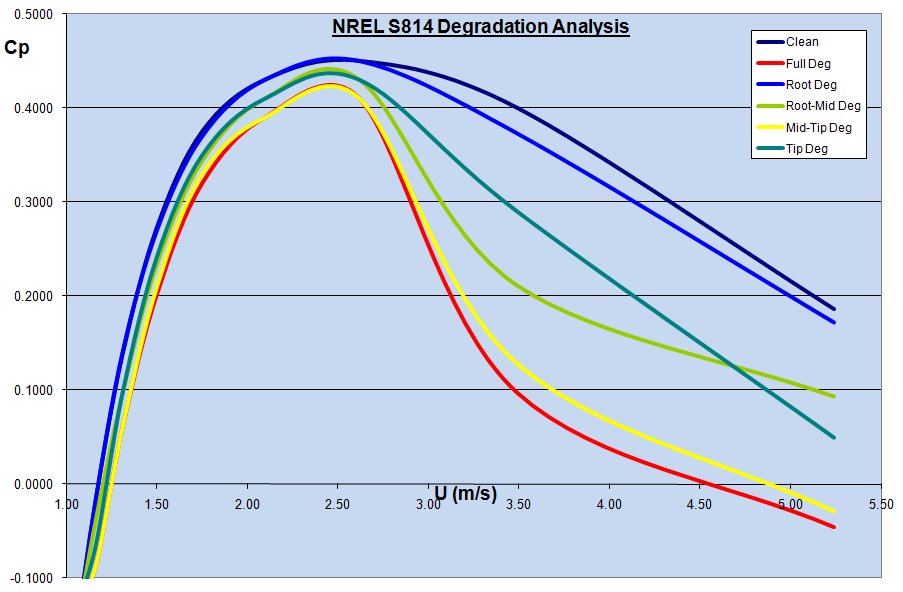Rotor assessment
It was an objective of the group to analyse how surface degradation affected power output in relation to its positioning along the span of a turbine blade. This involved isolating cases to analyse the effect of degradation at the inner (root to middle) and outer (middle to tip) sections of the blades. To do this we added functionality to the code in order to both, represent a degraded blade profile, and to simulate variable profiles with different surface characteristics along the span of the blade.
The results of the degraded rotor assessment are presented in the figure below. This shows the power curves for a clean rotor and a number of fully and partially degraded rotor configurations. These rotors have the same design characteristics as the basline turbine defined within the technical section of this website. Again, the curves illustrated are representative of how efficiently each rotor converts the energy in the tidal stream into electricity.
As expected a clean rotor is most efficient over the full range of tidal velocities. The greatest reduction in efficiency is observed when the rotor becomes degraded across the full span of the blades. Significant drops in Cp can be observed with this degree of surface degradation. When only the blade roots become degraded the power drop off is marginal in comparison with a clean rotor. The adverse effects of surface degradation appear to be more pronounced towards the outer sections of the rotor blades. This can be observed as decreasing Cp values between the curves representing separate cases of inner and outer surface blade degradation. It is likely that this is due to the reduced effect of the inner sections in comparison to the outer sections when generating power. The outer sections will generate more torque and hence, power, than the inner sections due to an increased lever arm. Therefore, when the outer sections become degraded, the effect on power output is more pronounced than if the inner sections suffer the same level of surface degradation.






